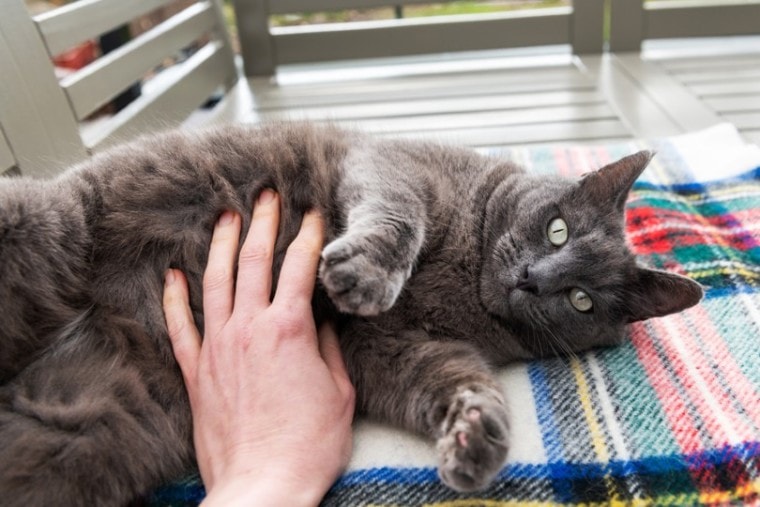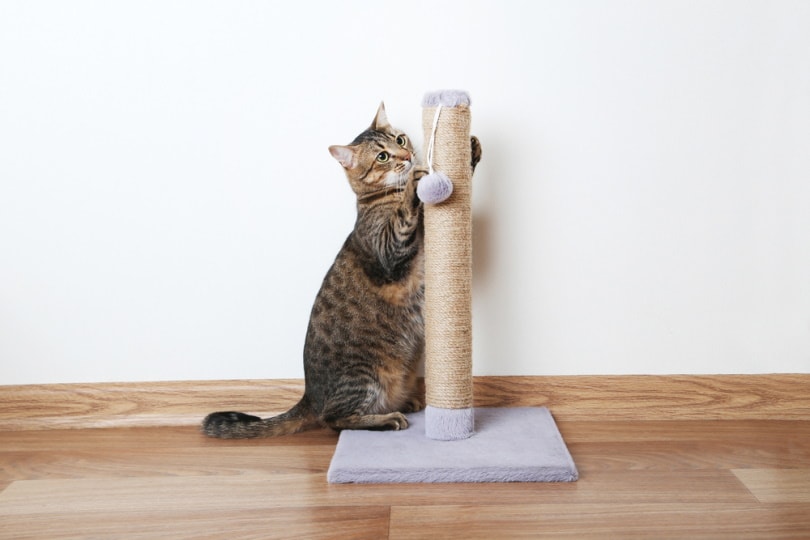
Cat declawing is a procedure that requires the removal of a section of bone attached to the claw and opponents of the procedure have described it as barbaric, likening it to cutting off the tips of fingers and toes to remove nails.
Declawing can negatively affect a cat’s balance and because of these objections, cat declawing is illegal in the UK as well as several other countries in Europe and across the world. Conversely, cat declawing is legal in the US, where cats are more often kept as indoor pets and not allowed to venture outside the house. Some individual cities have banned the declawing of cats, and some states are looking into making the procedure illegal.
Indoor vs. Outdoor Cats
Historically, UK households have let their cats roam outdoors. Outdoor cats can use items like trees and even fence posts to scratch, which means that they are less prone to scratching furniture and other indoor items. The trend is changing, however, and while only 10% of UK cats were kept exclusively as indoor cats, the figure is now closer to 50%.
Pet safety and increases in traffic and general urbanisation have led to this change in cat keeping. However, it is very unlikely that a swing to indoor cat ownership will lead to a change in the law.

A Last Resort
Declawing can still occur in the UK, but only where it is considered an absolute last resort. For example, if the alternative to a cat being declawed is euthanisation, a vet can apply to the veterinary council to be permitted to perform the procedure. This is very rare.
The Law
Declawing cats was only outlawed in the UK in 2006, as part of a law passed to safeguard and protect pets. Even prior to this, though, it was very rare for cats to be declawed in the UK. Even if a cat owner was able to find somebody willing to undertake the procedure, there is a fine of up to £20,000 for having the procedure done.

The Declawing Procedure
The most common declawing procedure is called onychectomy. During this procedure, the surgeon not only removes the claws but a piece of bone attached to the claws. This is considered the only way to effectively remove the whole claw.
The procedure is considered a painful one, and some vets and charities argue that the cat continues to suffer long after the procedure has been completed. Often, the removal is not completed properly so small pieces of bone can be left behind. The cat then effectively walks around on small pieces of bone, causing discomfort and pain. Studies suggest that declawed cats can become unhappy after the procedure as well, raising rates of depression and stress in pet cats.
Declawing is done under general anaesthetic and there are always risks associated with giving cats anaesthetic, as well as with surgical procedures in general.
Finally, it is believed that removing claws can cause a loss of balance. The cat will walk differently after the procedure because they are unable to put weight on the claws and the ends of its paws.
How to Stop a Cat From Clawing Furniture
While some owners believe cats scratch to sharpen their claws, the opposite is true. Cats scratch to dull their claws because it is an inherently natural thing to do. One of the most common reasons for people to declaw cats is to prevent them from scratching people or damaging items around the home.

Conclusion
Cat declawing is illegal in the UK, with opponents saying that the declawing process, which involves the removal of the bones attached to the claws, is inhumane and that it can cause a lifetime of suffering in cats that have to endure it. And, while more cats are being kept as exclusively indoor cats in the UK, it is highly unlikely that the current law, which was enacted in 2006, will change.
See Also:
- Here’s Why Declawing Cats Is Illegal in Australia
- Cat Declawing: Dangers, Alternatives & FAQ (Vet Answer)
Featured Image Credit: Anna Hoychuk, Shutterstock







